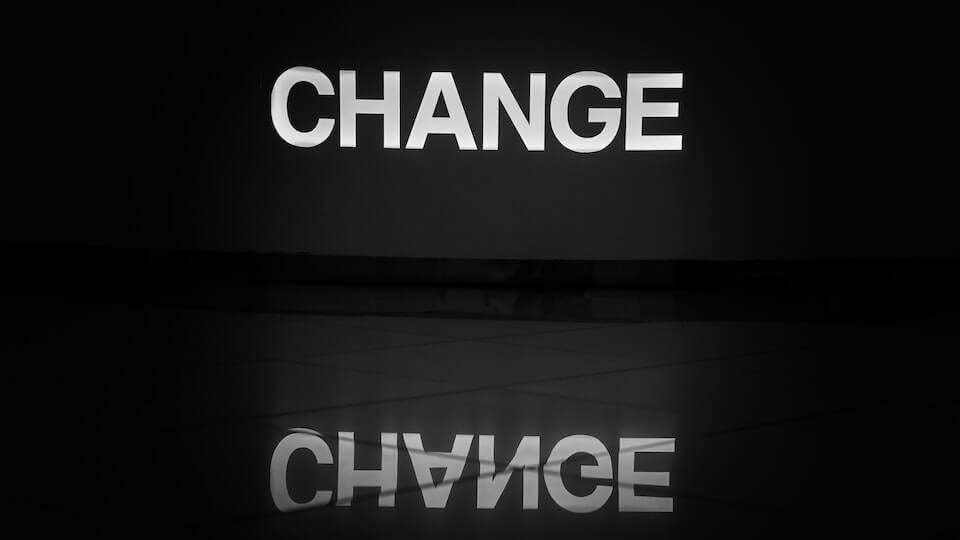
How to Create Change in Business
December 23, 2021
Increasing Business Profits by Adding Recurring Revenue Models
January 3, 2022Decentralization Through Leadership

If you’re the one pulling all of the levers and pushing all the buttons, you haven’t created a business. You’ve created a job. Yet, at some point, you’re going to want to retire and it’s going to be very difficult to transfer a business that depends on you for the success of its operations. I’ve often pointed to the need for business owners to remove themselves from the daily operations of their business. However, I’ve never really detailed how you can achieve that decentralization through leadership. So, join me as I discuss decentralization through leadership.
Follow Along With The Financially Simple Podcast!
TIME INDEX:
- 00:42 – The Five Stages of Leadership
- 02:06 – Top Down vs. Bottom Up
- 05:01 – The Five Levels of John C. Maxwell
- 05:23 – Position
- 05:46 – Permission
- 06:57 – Production
- 07:49 – People Development
- 08:54 – The Pinnacle
- 10:37 – The Five Levels of Jim Collins
- 11:18 – The Highly Capable
- 12:01 – The Contributor
- 12:43 – The Competent Manager
- 13:16 – The Effective Leader
- 14:06 – The Executive
- 14:28 – What Level are You?
- 16:38 – Summary
Decentralization Through Leadership
Typically, most business owners utilize top-down leadership. In this form of leadership, you are essentially a benevolent dictator with a team of servants working beneath you. Now, this may seem a little harsh, but if you’re really honest with yourself, that’s what it is. You make all of the rules and decisions. Your employees simply carry out orders. With this style of leadership, your business has a defined ceiling. Maybe you’re thinking, “Justin, that’s how I operate my company and we’ve seen tremendous growth.” That may be true. But when you’re ready to exit your business, you’re in for a rude awakening.
On the other hand, bottom-up leadership provides a path for development and growth while leaving you with an exit opportunity. The Torch has defined bottom-up leadership as a system of management that “occurs when goals, projects, and tasks are informed largely by employee feedback.” I know. Some of you are thinking I’ve lost my mind if I’m suggesting you allow your team to “run” your business. But, as a business owner, that’s exactly what you want your team to do. As they handle the daily operations, you’re free to focus on the major decisions and you can grow your business without painting yourself into a corner.
You see, decentralization through leadership requires a shift in your mindset. It requires you to transition the leadership of your business to the front lines. According to Sidney Yoshida’s Iceberg of Ignorance theory, only about 4% of a company’s problems are seen by top-level management. Therefore, it makes sense to develop leadership in your lower ranks because it’s the front-line worker that has the clearest view of the problems your business is facing. This type of bottom-up management removes you from the epicenter of your business’s operations.
The Five Levels of Leadership
Now that you understand the goal of decentralization through leadership, let’s take a look at the different levels. In his book, 5 Levels of Leadership, John Maxwell explains that there are five levels of leadership. Each one impacts how you are perceived by those under your leadership. So, does your team follow you simply because “you’re the boss,” or have you legitimately fostered and nurtured their admiration and respect? Let’s take a look at each of the five levels to gain a clearer perspective.
Level 1: Position
This is the lowest level of leadership. Oftentimes, this is a crew leader or an hourly supervisor. If you were to look at a company’s organizational chart, someone in this role might not be all the way at the bottom, but one step up. Every company has a leader by position. When you’re leading from the level of position, people are simply following because you’re in a position of authority. Of course, there are exceptions to the rule. Sometimes, true leaders hold a leadership by position role. However, if that’s the case, they rarely remain a leader solely by position. On the other hand, if you’re simply a leader by position (literally just a body filling a position) it’s not as likely that those in the lower ranks will ever elevate you beyond that role.
Level 2: Permission
Here is where you begin to see a shift. Once you’ve achieved leadership by permission, you’ve earned the right to lead others. Even if you’re not in a mid-to-upper management role, you could be given permission to lead by those under your leadership. The interesting thing about permission to lead is that it’s not always given to authority figures. I’ve seen front-line crews where a team member who holds the same rank as everyone else is elevated to leadership status by their co-workers. They look to this individual for guidance. But why? Well, leadership by permission is relational in nature. You can hold a management title and still not have received permission to lead from those whom you’re leading. You must earn that through building relationships and trust.
Level 3: Production
This is the area where I see so many business owners get stuck. Many of you have reached this level of leadership. Some of you have become quite comfortable here. However, this level should never be your final goal. At this level, what matters most are the results of your efforts. How well do you get things done? People see that you have the ability to accomplish objectives so, they want to connect themselves to you. They give you the right to lead because you produce results.
Unfortunately, this is where many business owners begin to stagnate. This is often where you find yourself when you’re the one pulling all of the levers in your business. Decentralization through leadership requires that you leave level three and move into level four. And, candidly, I fought this within my own business. But once I did, everything changed for me and my business. Suddenly, we were seeing incredible growth and my own stress level drastically decreased. So, what’s this magical fourth level?
Level 4: People Development
At this point, you’ve identified the individuals who will carry on leadership tasks within your company. But much more than this, you’ve invested in their growth and development. When you begin developing your team, you’re equipping them with the skills and advancement opportunities they desire, making your business a more attractive workplace. But beyond this, you’re providing your business with an invaluable resource… scalability. As you develop your team and its leaders, you’re creating systems that can be replicated.
Additionally, you’re eliminating your business’s dependence on you. Before I transitioned into level four leadership, I was never truly “away” from my business. I can’t tell you how many times I would go on hunting trips or family vacations, only to spend the majority of the time on the phone with the office, clients, etc. Folks, I know you know exactly what I’m talking about and it’s exhausting. But since I made the decision to take the next step, I’ve been blown away at the way my team has performed. I can leave the office and know that everything is being done the right way. I never have to be interrupted when I’m with my family anymore. Frankly, my office no longer needs me. But this isn’t the final step.
Level 5: The Pinnacle
Friends, I don’t know very many, if any at all, who have reached this level of leadership. Reaching the pinnacle takes time and intentionality. In fact, this is a process that could take decades. I think of my father in this regard. He worked for the same company for decades of his life. When it was time for him to retire, he had a handful of friends there to send him off. However, when he passed a few years ago, the church was busting at the seams with people who wanted to pay their respects.
You see, people knew who he was. They knew what he was about and they respected him. I’ve seen this time and again with ordinary, everyday people. The pinnacle of leadership is just that. It’s reaching the point where people respect who you are and what you represent. They want to follow you for those very same reasons. Friends, it’s difficult to reach this level in business. But, if you truly want to decentralize yourself through leadership, you must move beyond levels one, two, and three. You must move into people development and beyond.
Wrapping Up…
Friends, I don’t know where you find yourself in the five levels of leadership, today. But if you truly want to grow your business to be best-in-class, you must remove yourself from the epicenter of it. If you’re ready to decentralize yourself, you must do so through great leadership. You must become a true executive. But what does that mean? As Jim Collins once said, “They have the unique capability to develop a company’s greatness through the paradoxical combination of personal humility plus professional will.”
If you’re truly going to become the executive of your business, you must develop the company and the team for greatness. So, where are you in the five levels of leadership? Do you have a plan to move up the chain? If not, you’re going to need some help. Reach out to my team. We can help you in this area.
Look, life is hard. It comes at us so fast and there are so many obstacles to overcome. But life is good. Owning a business can be frustrating. But it doesn’t have to be. By removing yourself from the middle of your business and developing strong leadership among your team, you can make growing your business at least financially simple.
If you’re “stuck” in levels 1, 2, or 3, or if you’re looking for a plan to move into level 5, reach out to us. The Financially Simple team helps business owners with this and other common business issues every day.
Here at Financially Simple™, we want to help you make informed financial decisions for your small business with confidence. In doing so, we might recommend products and services that offer us compensation when you use them. This compensation is used to help offset the cost of creating the content we give to you for free. We will, however, never suggest products/services solely for the compensation received. As stated before, our goal is to make understanding money for you the business owner, your family, and anyone visiting this website—financially simple.



